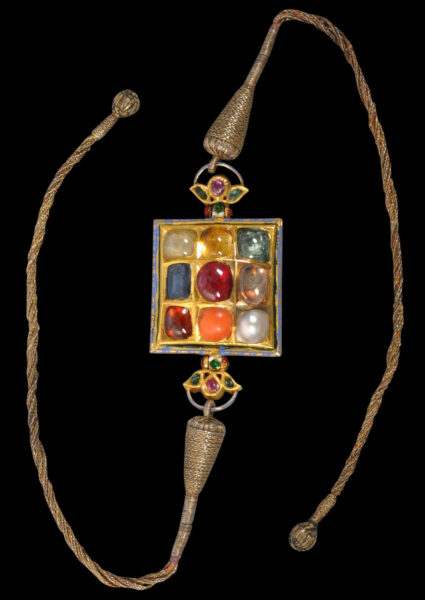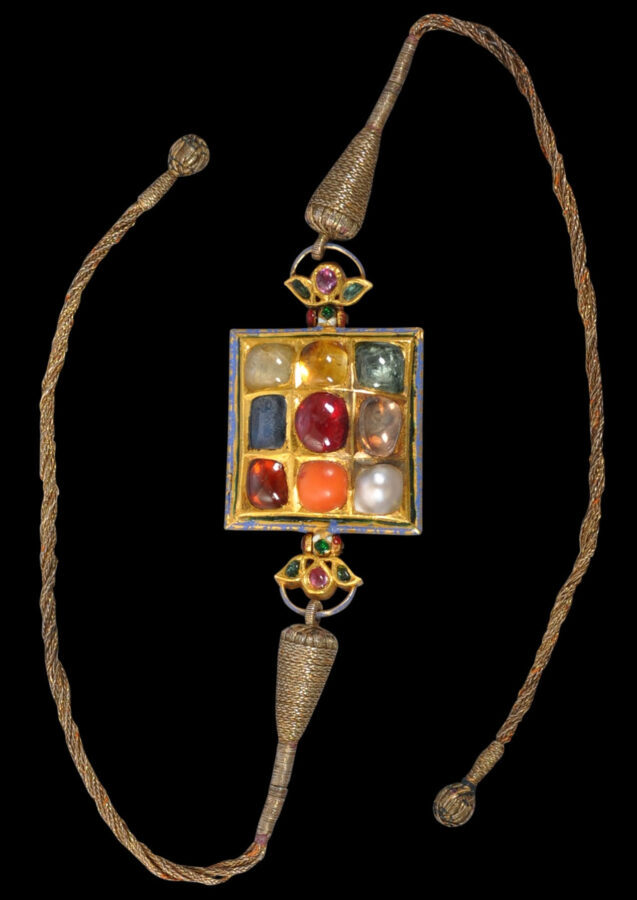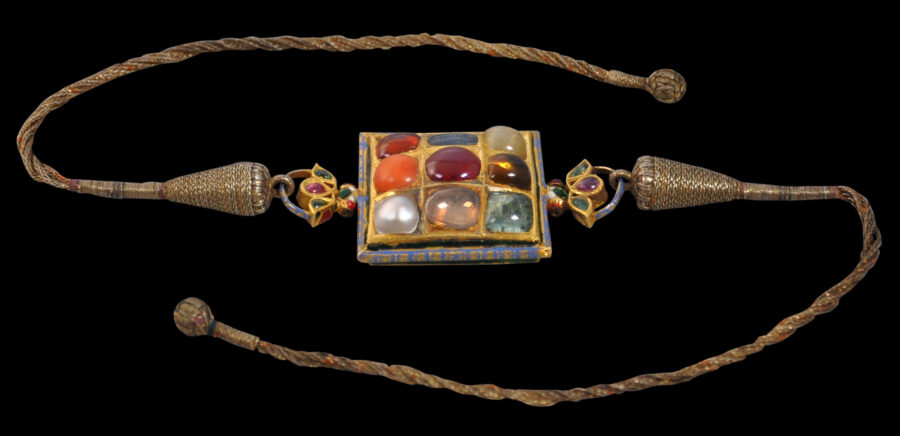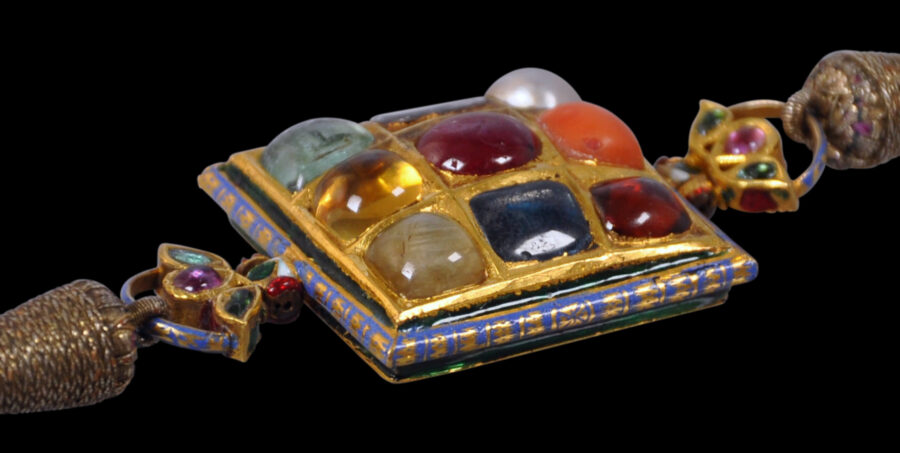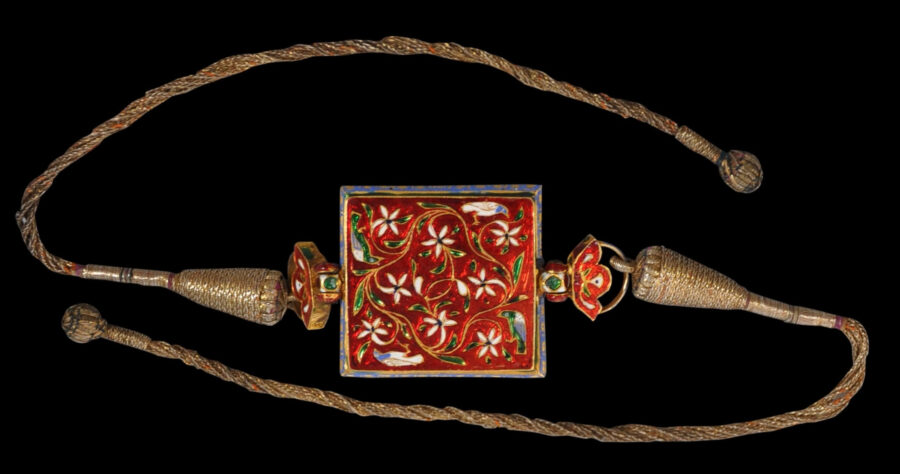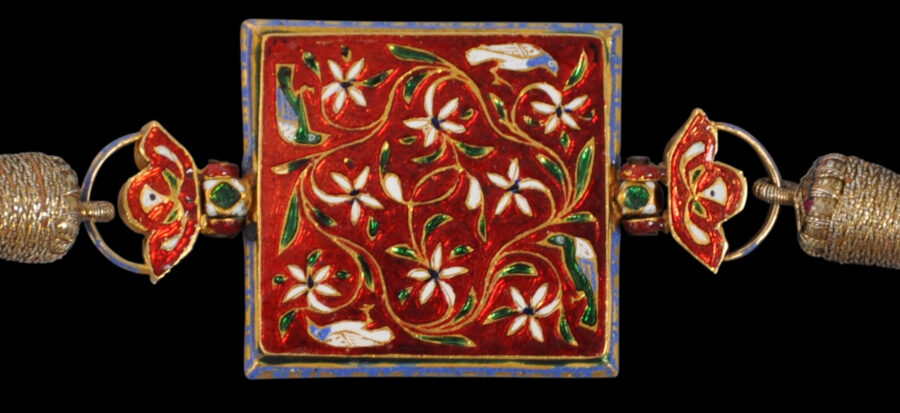This superb talismanic arm jewel or bazuband dates to around 1850 and most probably was made in Delhi. It is in flawless condition and probably was acquired new and never used.
It was intended to be worn on the upper arm by an aristocratic or princely Indian man. It is of gold that has been exquisitely enamelled and set with nine gems in kundan style. The cords leading from the jewel are very finely and delicately wrapped in gold metal thread. These are attached to pierced and enamelled hinges that are of stylised Mughal tulip form and set with emeralds and rubies.
The sides of the main body are decorated with light blue enamel against the gold. The reverse is enamelled with four bird motifs amid an array of foliage and white flowers against a red enamel ground.
The body of the bazuband is set with nine auspicious large, foil-backed cabochon gems – the navaratna gems – thus making it a nauratan bazuband. Included are a large pearl, a ruby, an emerald, a white sapphire, a blue sapphire and coral.
Untracht (1997, p. 309) says that in Dravidian south India, the navaratna gemstones are used as a rosary but elsewhere in India, they are used as a talismanic device, such as in the example here. The nine gems have multiple meanings and associations. One is that each gem represents the nine celestial Hindu deities and the nine ‘planets’. The ruby for example is linked to the sun, coral represents Mars, the blue sapphire represents Saturn, and so on. The precise composition of the nine gems varies however. Makers of such jewellery tended to use what they had; it is the colours that are important and symbolic rather than the stones themselves, so ‘stand-ins’ were used. Each planet may have a malevolent influence but this was thought to be countered by counterbalancing its representative stone among the others so that the influence of the companion stones would nullify any adverse influence.
The Victoria & Albert Museum in London has related examples acquired in 1855 and illustrated in Stronge, Smith & Harle (1988, p. 89).
The bazuband is in excellent condition and without restoration. Unusually, there is no fraying to the arm cords, no chipping to the enamel. This is a splendid, museum-quality example.
References
Stronge, S., N. Smith & J.C. Harle, A Golden Treasury: Jewellery from the Indian Subcontinent, Victoria & Albert Museum/Mapin Publishing, 1988.
Untracht, O., Traditional Jewelry of India, Thames & Hudson, 1997.


